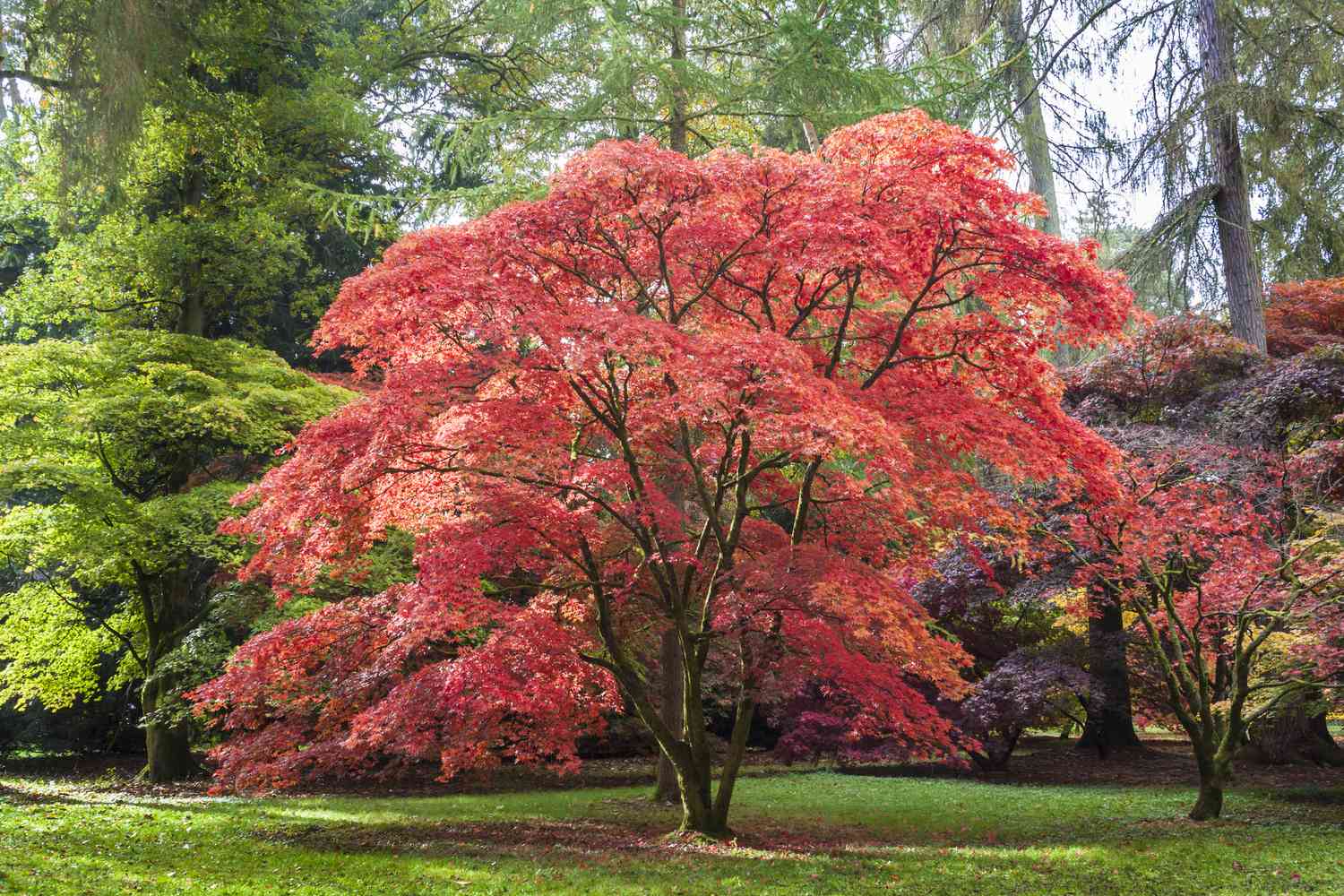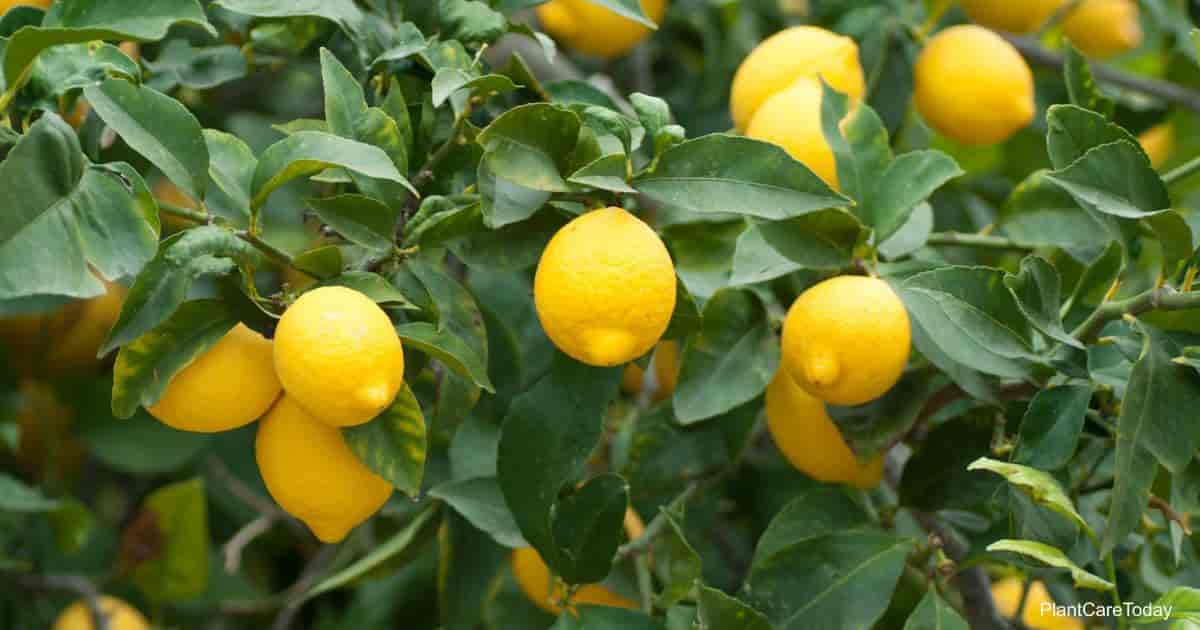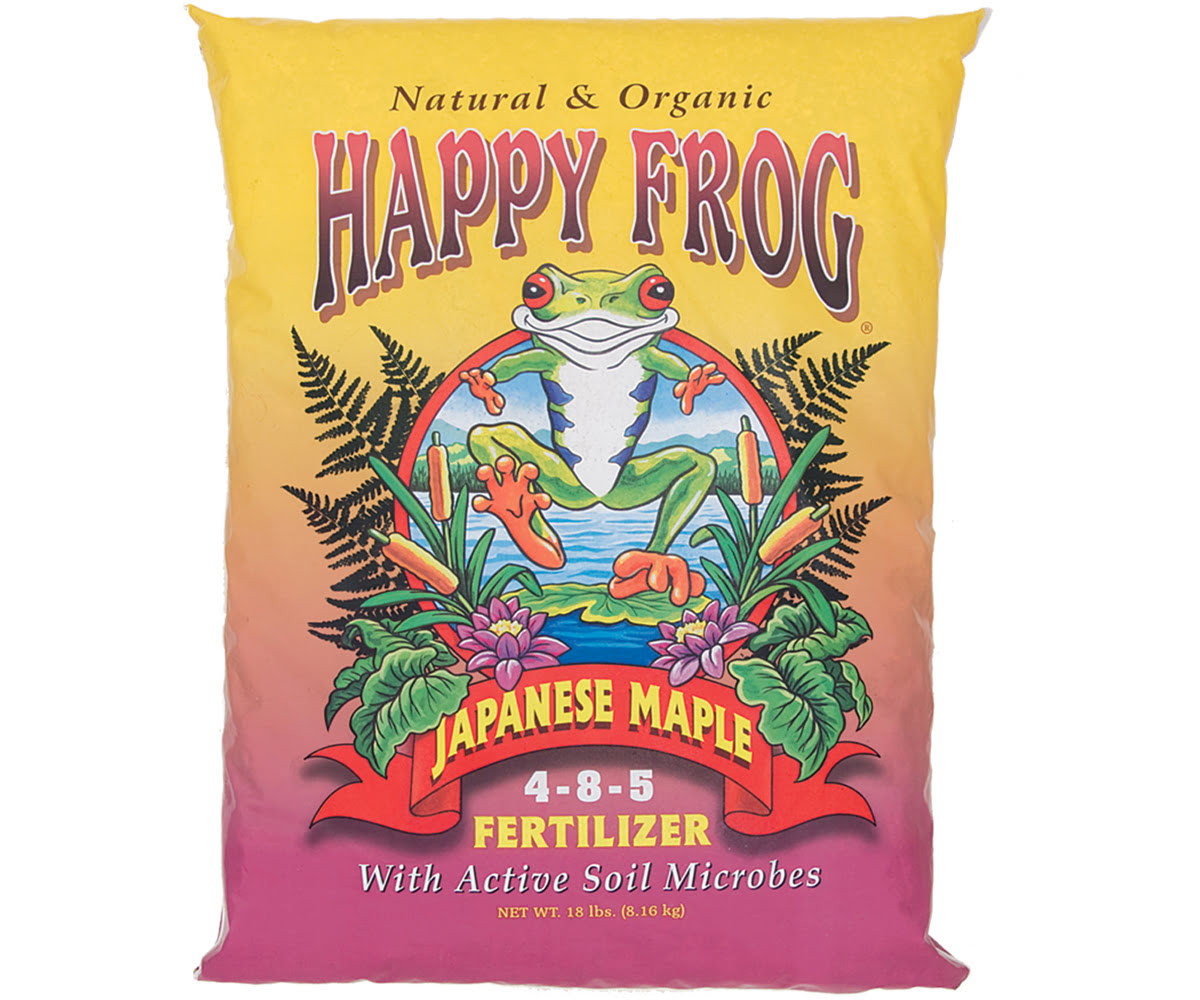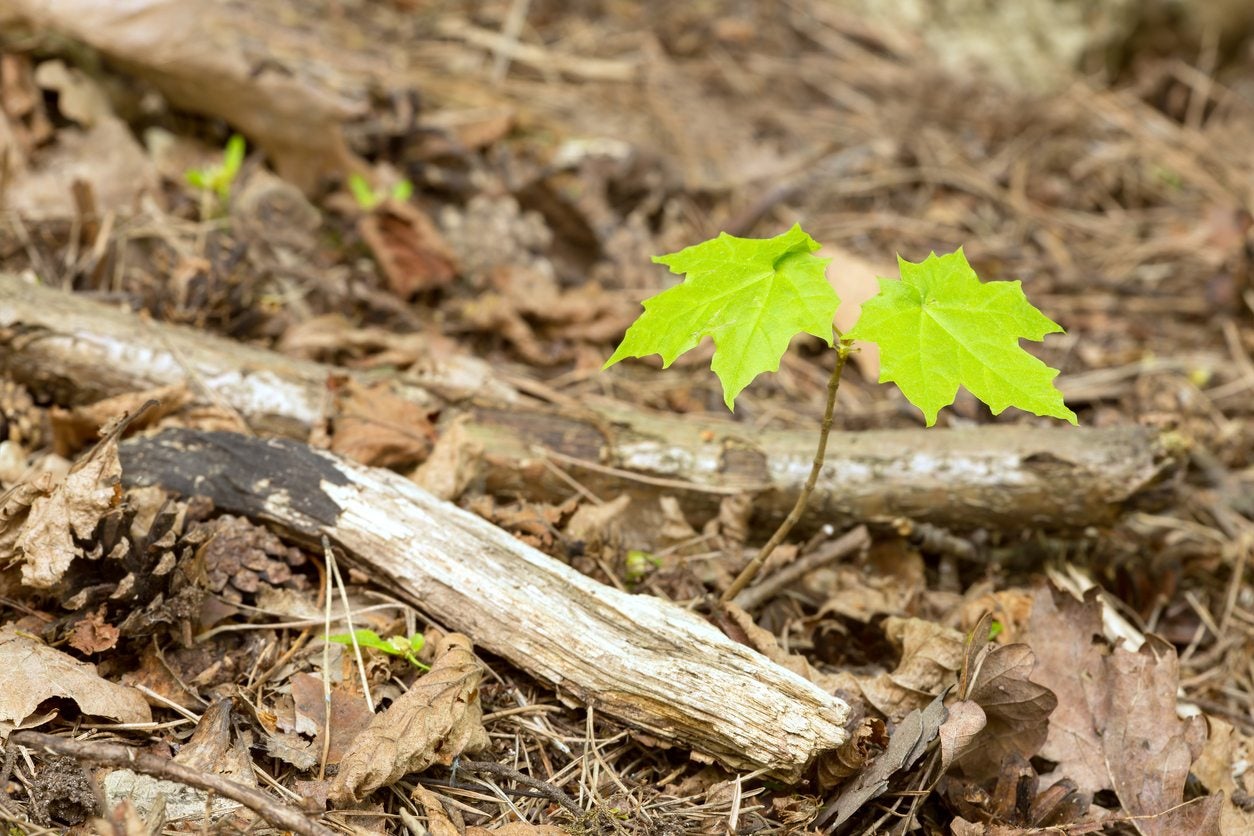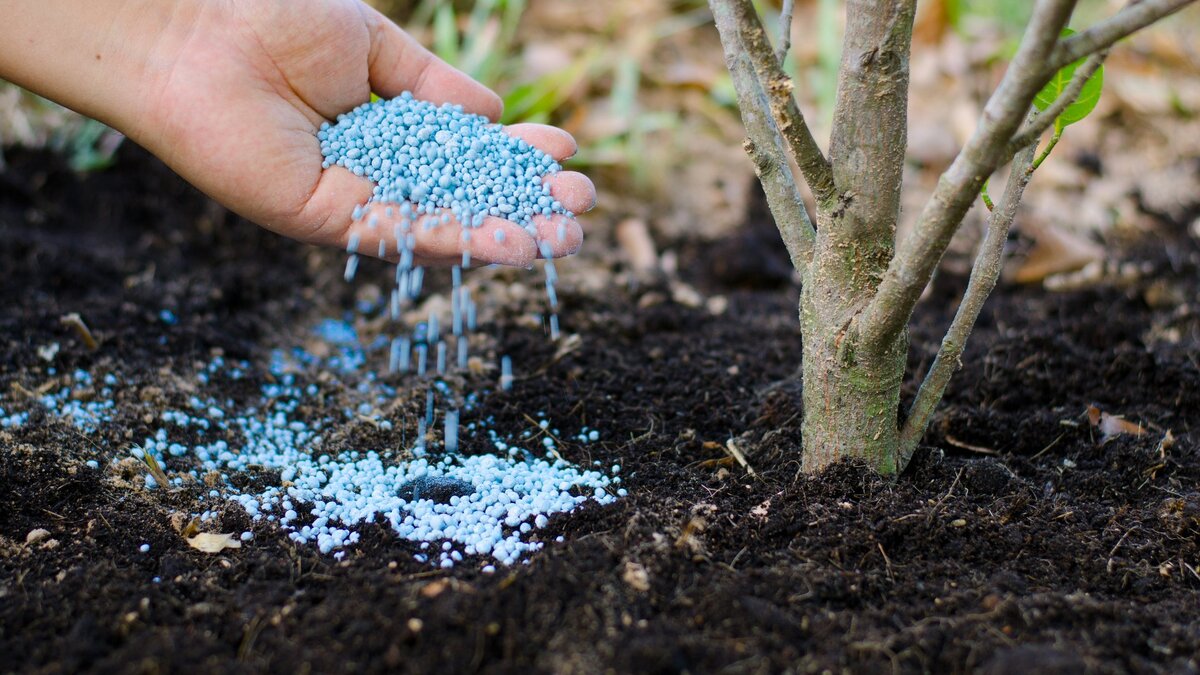Home>Types of Gardening>Ornamental Gardening>What Is The Best Fertilizer For A Maple Tree
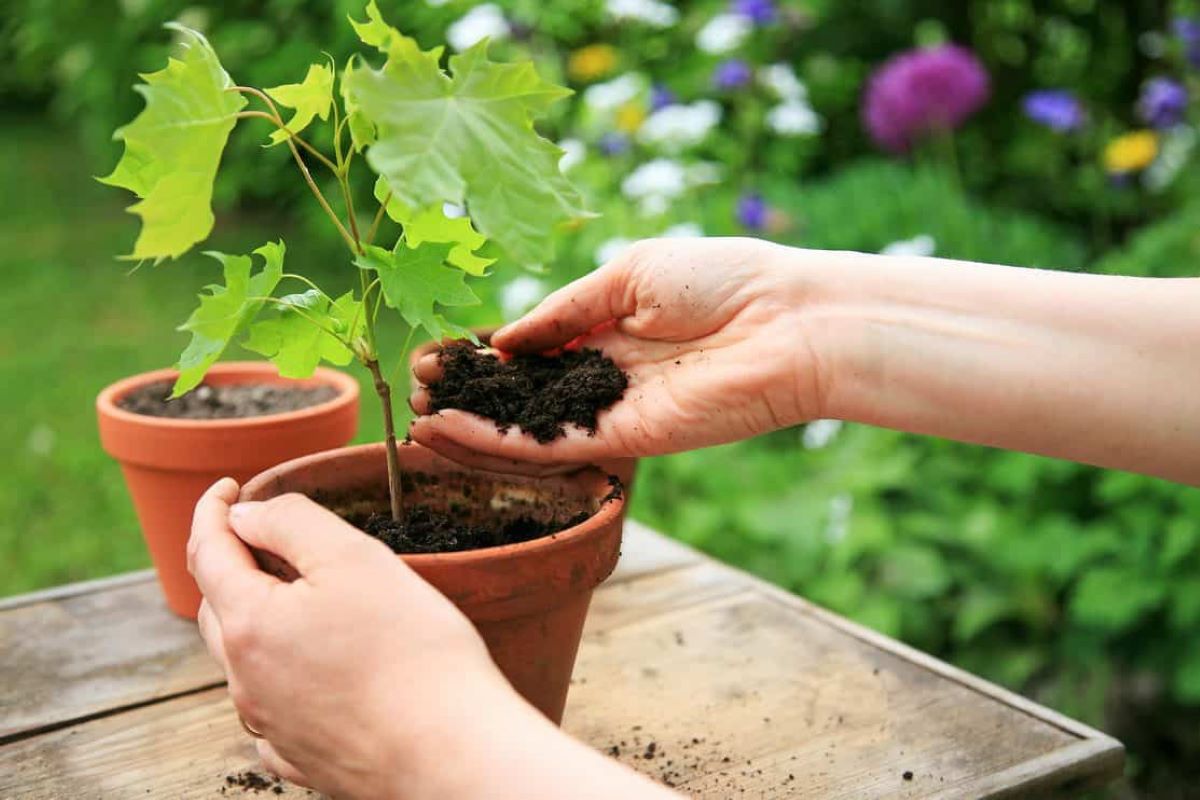

Ornamental Gardening
What Is The Best Fertilizer For A Maple Tree
Modified: January 22, 2024
Discover the ideal fertilizer for your maple tree and enhance its growth with our expert tips on ornamental gardening.
(Many of the links in this article redirect to a specific reviewed product. Your purchase of these products through affiliate links helps to generate commission for Chicagolandgardening.com, at no extra cost. Learn more)
Table of Contents
- Introduction
- Understanding Maple Trees
- Importance of Fertilizing Maple Trees
- Factors to Consider Before Choosing Fertilizer
- Types of Fertilizers for Maple Trees
- Organic Fertilizers
- Inorganic Fertilizers
- Custom Blended Fertilizers
- Fertilizing Techniques for Maple Trees
- Dos and Don’ts of Fertilizing Maple Trees
- Common Mistakes to Avoid
- Conclusion
Introduction
Welcome to the world of ornamental gardening! If you have a passion for beautiful landscapes and vibrant gardens, then ornamental gardening is for you. And what better way to start than by delving into the captivating world of maple trees?
Maple trees are not only admired for their exquisite foliage but also for their ability to add a touch of elegance to any outdoor space. These majestic trees are known for their vibrant fall colors, graceful branches, and overall aesthetic appeal. But to keep your maple tree looking its best, you need to provide it with proper care and nourishment, including the right fertilizer.
Fertilizing maple trees is essential to ensure their optimal growth, health, and resilience. By providing the right nutrients, you can promote strong root development, vibrant foliage, and overall vigor, allowing the tree to withstand various environmental stressors and thrive for years to come.
However, the world of fertilizers can be overwhelming, with a wide range of products available on the market. Choosing the best fertilizer for your maple tree requires a deep understanding of its specific needs and the different types of fertilizers available. But worry not! In this article, we will guide you through the process of selecting the most suitable fertilizer for your beloved maple tree.
Whether you are new to gardening or a seasoned horticulturist, this article will provide you with valuable insights and practical tips on fertilizing maple trees. So, get ready to unlock the secrets of nourishing your maple tree and witness its splendid growth and breathtaking beauty!
Understanding Maple Trees
Before diving into the details of fertilizing maple trees, it’s important to have a good understanding of these magnificent specimens. Maple trees belong to the genus Acer and are renowned for their stunning foliage, unique branching patterns, and exceptional tolerance to different growing conditions.
There are over 120 species of maple trees, ranging from small ornamental varieties to large shade trees. They are native to various parts of the world, including North America, Europe, and Asia. Maple trees have distinct leaves with prominent veins and serrated edges. The shape and color of the leaves may vary depending on the species.
Maple trees are deciduous, meaning they shed their leaves during the fall season. This process is accompanied by a breathtaking display of vibrant colors, including shades of yellow, orange, red, and even purple. It’s no wonder that maple trees are highly sought after for their autumnal beauty.
In addition to their aesthetic appeal, maple trees offer several other benefits. They provide shade and shelter, act as windbreaks, help to improve air quality, and attract birds and other wildlife. They also make excellent focal points in landscaping designs and can be grown in gardens, parks, and along streets.
Maple trees have specific growth requirements that need to be met in order for them to thrive. They prefer well-drained soil and have different soil pH preferences depending on the species. Most maple trees thrive in slightly acidic to neutral soil conditions. They also require adequate sunlight and water to support healthy growth.
It’s essential to know the specific species of maple tree you have or plan to plant, as different varieties may have unique characteristics and preferences. Understanding the specific needs of your maple tree will help you provide the right care, including choosing the appropriate fertilizer.
Now that you have a basic understanding of maple trees, it’s time to explore the importance of fertilizing these trees and the factors you should consider before choosing the right fertilizer.
Importance of Fertilizing Maple Trees
Fertilizing maple trees is a crucial aspect of their overall care and maintenance. While these trees are generally hardy and can tolerate a variety of soil conditions, proper fertilization is essential for promoting their growth, vitality, and resilience.
One of the key benefits of fertilizing maple trees is that it provides them with the essential nutrients they need for healthy development. These nutrients include nitrogen (N), phosphorus (P), and potassium (K), also known as NPK. Each of these nutrients plays a vital role in the various physiological processes of the tree, such as root development, leaf growth, and overall vigor.
By applying fertilizer to your maple tree, you can help enhance its root system, allowing it to absorb water and nutrients more effectively from the soil. This leads to improved overall health and enables the tree to withstand environmental stressors such as drought and extreme temperatures.
Fertilizing also promotes lush foliage, which is one of the most desirable features of maple trees. The right balance of nitrogen in the fertilizer can encourage the development of vibrant and abundant leaves, creating a picturesque canopy that adds beauty to your landscape.
Another crucial reason to fertilize maple trees is to support their ability to resist pests and diseases. When a tree lacks adequate nutrients, it becomes more susceptible to attacks from insects, fungi, and other harmful organisms. By providing the necessary nutrients, you can boost the tree’s natural defenses and improve its ability to fight off pests and diseases.
In addition, fertilizing maple trees can enhance their fall colors. Certain nutrients, such as phosphorus and potassium, play a significant role in promoting the intensity and longevity of the tree’s autumn foliage. By providing the right balance of these nutrients, you can enjoy a stunning display of vibrant reds, oranges, and yellows during the fall season.
Overall, proper fertilization is vital for maintaining the health, beauty, and longevity of your maple tree. It provides the necessary nutrients for growth and helps the tree withstand environmental challenges, resist pests and diseases, and showcase its stunning fall colors. Now that you understand the importance of fertilizing maple trees, let’s explore the factors you should consider when selecting the right fertilizer.
Factors to Consider Before Choosing Fertilizer
When it comes to selecting the right fertilizer for your maple tree, there are several important factors to consider. Taking these factors into account will help ensure that you choose a product that meets the specific needs of your tree and promotes optimal growth and health.
- Soil pH: Maple trees generally prefer slightly acidic to neutral soil conditions. It’s important to test the pH of your soil before selecting a fertilizer. If the pH is too high or too low, it can affect the tree’s ability to absorb nutrients effectively. Choose a fertilizer that is formulated for the appropriate soil pH range.
- Nutrient Requirements: Different species and varieties of maple trees have varying nutrient requirements. Some maple trees may require higher levels of nitrogen, while others may require more phosphorus or potassium. Understanding the specific nutrient needs of your maple tree will help you select a fertilizer with the appropriate nutrient ratios.
- Fertilizer Analysis: Fertilizers are labeled with three numbers that represent the percentage of nitrogen (N), phosphorus (P), and potassium (K) they contain. This is known as the fertilizer’s analysis or NPK ratio. Consider the specific nutrient requirements of your maple tree and choose a fertilizer with an appropriate balance of NPK.
- Slow-Release vs. Quick-Release: Fertilizers come in both slow-release and quick-release forms. Slow-release fertilizers gradually release nutrients over an extended period, providing a steady supply to the tree. Quick-release fertilizers release nutrients immediately but may require more frequent applications. Consider the convenience and longevity of the fertilizer when making your choice.
- Organic vs. Inorganic: Another factor to consider is whether to choose an organic or inorganic fertilizer. Organic fertilizers are derived from natural sources and provide a slow-release of nutrients. They improve soil health and promote long-term sustainability. Inorganic fertilizers, also known as synthetic or chemical fertilizers, provide immediate results but do not improve soil structure. Consider your personal preferences and gardening philosophies when deciding between organic and inorganic options.
By considering these factors, you can make an informed decision when choosing the right fertilizer for your maple tree. Remember, providing the tree with the proper nutrients is essential for its overall health, growth, and resilience. Now that you have a better understanding of the factors to consider, let’s explore the different types of fertilizers available for maple trees.
Types of Fertilizers for Maple Trees
When it comes to fertilizing maple trees, there are several types of fertilizers to choose from, each with its own advantages and considerations. Let’s explore the different options available:
- Organic Fertilizers: Organic fertilizers are derived from natural sources such as compost, manure, bone meal, and seaweed. These fertilizers provide a slow-release of nutrients, allowing for gradual absorption by the tree’s roots. Organic fertilizers also improve soil health, enhance microbial activity, and promote long-term sustainability. They are an excellent choice for those who prefer natural and environmentally friendly gardening practices.
- Inorganic Fertilizers: Inorganic fertilizers, also known as synthetic or chemical fertilizers, are manufactured using synthetic materials and may have higher nutrient concentrations than organic alternatives. These fertilizers provide quick-release nutrients, allowing for immediate absorption by the tree. They are convenient and effective, but they do not improve soil structure or long-term soil health. Inorganic fertilizers are ideal for situations where rapid results are desired.
- Custom Blended Fertilizers: Custom blended fertilizers offer the advantage of tailoring the nutrient composition to suit the specific needs of your maple tree. They are created by mixing organic and inorganic components or by combining different types of organic materials. Custom-blending allows for more control over nutrient ratios and may be particularly beneficial if you have specific soil conditions or nutrient deficiencies.
When selecting a fertilizer, it’s important to consider the specific requirements of your maple tree and your personal gardening preferences. Organic fertilizers are an excellent choice if you prioritize sustainability, soil health, and long-term benefits. Inorganic fertilizers can provide fast results and convenience. Custom-blended fertilizers offer the flexibility to meet specific nutrient needs.
Regardless of the type of fertilizer you choose, it’s important to follow the manufacturer’s instructions for application rates and timings. Over-fertilization can harm your maple tree and may lead to nutrient imbalances or burn the roots.
Now that you have an understanding of the different types of fertilizers available, let’s explore the proper techniques for fertilizing maple trees to maximize their benefits.
Organic Fertilizers
Organic fertilizers are a popular choice among gardeners seeking natural and sustainable options for fertilizing their maple trees. These fertilizers are derived from natural sources and offer several benefits for both the tree and the overall health of the soil.
One of the key advantages of organic fertilizers is their slow-release nature. They break down gradually, releasing nutrients over time. This slow-release mechanism ensures a steady supply of nutrients to the tree, reducing the risk of nutrient leaching and imbalance. It also promotes long-term growth and overall health of the maple tree.
Organic fertilizers are typically made from natural materials such as compost, manure, bone meal, blood meal, fish emulsion, and seaweed. These materials are rich in various nutrients, including nitrogen, phosphorus, potassium, and micronutrients. They provide a balanced combination of essential elements, supporting the tree’s growth and nourishment.
In addition to providing vital nutrients, organic fertilizers improve soil structure. They enhance microbial activity and promote the development of beneficial organisms in the soil. This results in improved nutrient availability, better water retention, and overall soil health. Healthy soil supports healthy root development and allows the maple tree to absorb nutrients more efficiently.
Another advantage of organic fertilizers is their environmental friendliness. They are made from natural and renewable resources, reducing the reliance on synthetic chemicals. Organic fertilizers also contribute to reducing water pollution by minimizing nutrient runoff and leaching. This makes them a sustainable choice for gardeners concerned about the ecological impact of their gardening practices.
When using organic fertilizers, it’s important to consider the specific nutrient requirements of your maple tree. Different organic fertilizers have different nutrient compositions, so it’s essential to choose a well-balanced product that meets the tree’s needs. It’s also important to follow the manufacturer’s instructions regarding application rates and frequency.
Some gardeners also opt to create their own organic fertilizers through composting. Composting kitchen scraps, yard waste, and other organic materials results in nutrient-rich compost that can be applied to the maple tree. This is a cost-effective and sustainable approach to fertilizing, as it utilizes household waste and reduces the need for synthetic products.
Overall, organic fertilizers are a fantastic option for those looking to nourish their maple trees naturally and sustainably. With their slow-release mechanism, soil-enhancing properties, and environmental benefits, organic fertilizers can help your maple tree thrive while contributing to a healthier garden ecosystem.
With an understanding of organic fertilizers, let’s now explore inorganic fertilizers and their considerations when fertilizing maple trees.
Inorganic Fertilizers
Inorganic fertilizers, also known as synthetic or chemical fertilizers, are a widely used option for fertilizing maple trees. These fertilizers are manufactured using synthetic materials and offer certain advantages in terms of convenience and immediate results.
One of the key benefits of inorganic fertilizers is their high nutrient concentration. They are formulated to provide a precise balance of essential nutrients, including nitrogen, phosphorus, potassium, and micronutrients. This concentrated formulation ensures that the maple tree receives an immediate and targeted nutrient boost.
Inorganic fertilizers are typically available in different formulations, such as granules, pellets, or liquid forms. This variety allows for easy application and can be applied during specific times of the year to meet the tree’s nutrient needs. Inorganic fertilizers also come with instructions on the application rates and timing, providing guidelines for maximizing their effectiveness.
One advantage of inorganic fertilizers is their fast-acting nature. As soon as applied, the nutrients can be readily taken up by the maple tree’s roots, leading to quick results. This can be particularly beneficial if you are looking to address specific nutrient deficiencies or provide a boost to the tree’s growth and vitality.
However, it’s important to note that inorganic fertilizers do not improve soil structure or long-term soil health. They provide immediate nutrients to the tree, but they do not contribute to the overall fertility and microbial activity of the soil. As a result, continuous and excessive use of inorganic fertilizers can lead to nutrient imbalances and potential harm to the environment.
When using inorganic fertilizers, it’s crucial to follow the manufacturer’s instructions closely. Apply the fertilizer according to the recommended rates and timings, taking care to avoid over-fertilization, which can damage the tree’s roots. It’s also important to consider the specific nutrient requirements of your maple tree and choose a fertilizer with the appropriate NPK ratio.
Many commercial inorganic fertilizers also offer specialized formulations for different stages of the maple tree’s growth, such as fertilizers designed for promoting root development, foliage growth, or fall color enhancement. These targeted formulations can be beneficial if you have specific goals or requirements for your maple tree.
In summary, inorganic fertilizers provide a convenient and efficient way to provide immediate nutrients to your maple tree. They offer precise nutrient ratios and quick results. However, it’s important to be mindful of their potential environmental impact and use them in moderation. Now that you understand inorganic fertilizers, let’s explore custom-blended fertilizers as another option for fertilizing maple trees.
Custom Blended Fertilizers
Custom blended fertilizers offer a unique approach to fertilizing maple trees by tailoring the nutrient composition to meet the specific needs of your tree. These fertilizers are created by combining different organic and/or inorganic components, allowing for a more targeted and customized nutrient blend.
One of the key advantages of custom blended fertilizers is the ability to adjust the nutrient ratios to match the specific requirements of your maple tree. By understanding the nutrient deficiencies or imbalances in your soil, you can create a fertilizer blend that addresses these issues effectively. This ensures that your tree receives the precise combination of nutrients it needs for optimal growth and health.
Custom blended fertilizers allow for flexibility in nutrient selection, making them an ideal choice for gardeners who are knowledgeable about the specific nutrient needs of their maple trees. For example, if you have conducted soil tests and identified specific deficiencies, you can incorporate the necessary nutrients into the blend to correct those imbalances.
These fertilizers can be created by combining various organic materials, such as compost, manure, bone meal, or seaweed, with inorganic fertilizers. The specific components and ratios can be adjusted based on your maple tree’s requirements and your gardening preferences. This allows you to take advantage of the benefits of both organic and inorganic fertilizers.
Using custom blended fertilizers requires a good understanding of nutrient ratios and the specific needs of your maple tree. It’s important to conduct soil tests and consult with experts to ensure accurate nutrient adjustments. Following the recommended application rates and timings for the custom blend is crucial to prevent over-fertilization and potential harm to the tree.
One potential drawback of custom blended fertilizers is the need for more effort and knowledge in their creation. It may involve sourcing the necessary components and carefully calculating the correct ratios. However, the ability to tailor the nutrient blend precisely to your maple tree’s needs can outweigh the additional effort.
Overall, custom blended fertilizers provide a specialized and targeted approach to fertilizing maple trees. By customizing the nutrient composition, these fertilizers can address specific deficiencies and imbalances, ensuring optimal growth and health for your beloved maple tree. Now that you have explored the different types of fertilizers, let’s move on to the techniques for effectively fertilizing maple trees.
Fertilizing Techniques for Maple Trees
Proper fertilizing techniques are essential to ensure that your maple tree receives the maximum benefits from the chosen fertilizer. By following these techniques, you can effectively nourish your tree and promote its growth and health.
1. Timing: Fertilize your maple tree at the appropriate times to maximize nutrient absorption and utilization. In general, it’s best to fertilize in early spring before new growth starts or in late fall before the tree enters dormancy. Avoid fertilizing during periods of drought or extreme heat as it can lead to fertilizer burn.
2. Application Method: Determine the most suitable application method for your chosen fertilizer. Granular or pelletized fertilizers can be spread around the base of the maple tree in a circular pattern. Liquid fertilizers can be applied directly to the soil around the tree or used as foliar sprays. Follow the manufacturer’s instructions for the recommended application method.
3. Application Rates: Apply the fertilizer at the recommended rates to avoid over-fertilization. Too much fertilizer can cause nutrient imbalances, growth abnormalities, or even damage to the tree’s roots. Measure the correct amount of fertilizer and evenly distribute it around the tree’s drip line, which is the outer edge of the tree’s canopy.
4. Watering: After fertilizing, water the area thoroughly. This helps to dissolve and distribute the fertilizer into the soil, making it available for the tree’s roots to absorb. Adequate watering also reduces the risk of fertilizer burn and helps prevent nutrient runoff.
5. Mulching: Consider applying a layer of organic mulch, such as wood chips or bark, around the base of the maple tree. Mulch helps retain moisture, regulate soil temperature, and suppress weed growth. It also gradually releases nutrients into the soil, complementing the effects of fertilization.
6. Maintenance: Regularly monitor your maple tree for any signs of nutrient deficiencies or excesses. These signs can include yellowing or discolored leaves, stunted growth, or unusual leaf drop. Adjust your fertilization program accordingly, ensuring that your tree receives the appropriate nutrients for optimal health.
By following these fertilizing techniques, you can ensure that your maple tree receives the nutrients it needs to thrive and enhance its beauty. However, it’s also important to be aware of some common mistakes to avoid when fertilizing maple trees, which we will explore in the next section.
Dos and Don’ts of Fertilizing Maple Trees
When it comes to fertilizing maple trees, following the dos and don’ts can make a significant difference in the health and growth of your tree. By being mindful of these guidelines, you can ensure that your fertilization efforts are effective and beneficial:
Do:
- Do conduct a soil test to determine any nutrient deficiencies or imbalances.
- Do choose a fertilizer that is suitable for your maple tree species and its specific nutrient needs.
- Do follow the manufacturer’s instructions for the recommended application rates and timings.
- Do water the area thoroughly after fertilization to help distribute the nutrients and prevent fertilizer burn.
- Do monitor your maple tree for any signs of nutrient deficiencies or excesses and adjust your fertilization program accordingly.
- Do consider incorporating organic matter into the soil to improve its overall health and fertility.
Don’t:
- Don’t over-fertilize your maple tree, as it can lead to nutrient imbalances, root damage, and environmental pollution.
- Don’t apply fertilizer during periods of drought or extreme heat, as it can cause stress to the tree and decrease nutrient absorption.
- Don’t fertilize too close to the trunk of the tree, as it may damage the delicate root system.
- Don’t assume that more fertilizer is better. Follow the recommended application rates to prevent over-application.
- Don’t use fertilizer with high nitrogen content late in the growing season, as it can stimulate new growth that may not harden off before winter.
- Don’t rely solely on fertilizers. Understand and address other factors that contribute to the health of your maple tree, such as proper watering, pruning, and pest management.
By following these dos and don’ts, you can ensure that your fertilization efforts for your maple tree are safe, effective, and beneficial. It’s important to remember that each tree is unique, so monitoring its response to fertilization is key in refining your approach over time.
Now that you are aware of the dos and don’ts, let’s explore some common mistakes to avoid when fertilizing maple trees in the next section.
Common Mistakes to Avoid
When fertilizing maple trees, it’s important to be aware of common mistakes that can hinder the tree’s growth and overall health. By avoiding these mistakes, you can ensure that your fertilization efforts are effective and beneficial:
- Over-fertilization: One of the most common mistakes is applying too much fertilizer. This can lead to nutrient imbalances, burning of the tree’s roots, and potential damage to the overall health of the tree. Always follow the recommended application rates for the specific fertilizer you are using.
- Applying fertilizer too late in the season: Applying fertilizer too late in the growing season can stimulate new growth that may not have enough time to harden off before winter. This can make the tree more vulnerable to cold temperatures and other environmental stressors. It is best to fertilize in early spring or late fall.
- Using the wrong fertilizer: Different varieties of maple trees have varying nutrient requirements. Using the wrong fertilizer that doesn’t provide the necessary nutrients for your specific tree can lead to suboptimal growth and health. Take the time to research and choose a fertilizer that matches the specific needs of your maple tree.
- Applying fertilizer too close to the trunk: Applying fertilizer directly next to the trunk can harm the tree’s delicate root system. Instead, apply the fertilizer around the tree’s drip line, which is the outer edge of the tree’s canopy. This ensures that the nutrients are evenly distributed and absorbed by the tree’s roots.
- Forgoing soil testing: Soil testing is essential to determine the nutrient status of your soil and identify any deficiencies or imbalances. Without conducting a soil test, you may be applying fertilizers blindly, which can result in unnecessary or ineffective fertilization. Take the time to test your soil and adjust your fertilization program accordingly.
- Ignoring other factors: Fertilization is just one aspect of caring for your maple tree. Other factors, such as proper watering, adequate sunlight, pruning, and pest management, also contribute to the tree’s health and vitality. Ignoring these factors can hinder the tree’s overall development, even with proper fertilization.
By avoiding these common mistakes, you can ensure that your maple tree receives the right amount of nutrients at the right time, maximizing its growth and overall health. Remember to consider the specific requirements of your tree, conduct soil tests, and closely follow the recommended guidelines for fertilization.
Now that you are aware of the common mistakes to avoid, you are well-equipped to fertilize your maple tree effectively and promote its long-term success. Let’s conclude our exploration of fertilizing maple trees with a brief summary of the key points discussed.
Conclusion
Fertilizing maple trees is a crucial aspect of their care and maintenance, ensuring optimal growth, health, and aesthetic appeal. Understanding the specific needs of your maple tree and choosing the right fertilizer are essential for successful fertilization.
Organic fertilizers provide a natural and sustainable option, offering slow-release nutrients and improving soil health. Inorganic fertilizers, on the other hand, offer convenience and immediate results. Custom-blended fertilizers allow for a tailored approach, addressing specific nutrient requirements.
When fertilizing maple trees, it is important to follow proper techniques, including timing, application rates, and watering. Additionally, being mindful of dos and don’ts, such as avoiding over-fertilization and applying fertilizer too late in the season. By avoiding common mistakes, like applying fertilizer too close to the trunk or ignoring soil testing, you can ensure effective and beneficial fertilization.
Remember, fertilization is just one aspect of caring for your maple tree. Proper watering, adequate sunlight, pruning, and pest management are also crucial. By considering all these factors and providing your maple tree with the care it needs, you can enjoy its lush foliage, vibrant fall colors, and the overall beauty it adds to your landscape.
So, embark on your ornamental gardening journey, armed with the knowledge and understanding of fertilizing maple trees. Nourish your maple tree with the right fertilizer, follow the best practices, and watch it thrive and flourish, bringing you joy and admiration for years to come.


